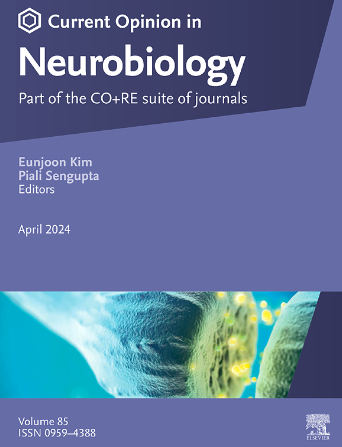Bioengineering tools for next-generation neural organoids
IF 4.8
2区 医学
Q1 NEUROSCIENCES
引用次数: 0
Abstract
Human stem cell–derived neural organoids were recently introduced as powerful in vitro 3D experimental model systems that innately undergo critical steps of organogenesis in culture and exhibit molecular, cellular, and structural features similar to the fetal human nervous system. These organoids have yielded new insights into human neurodevelopment and associated disorders. However, neural organoids have some crucial limitations that arise from the loosely controlled conditions for their development, an inability to maintain their spatial orientation in culture and a lack of technologies for taking long-term measurements on their morphology and electrical activity. Here, we review recent progress in using bioengineering methods to improve neural organoid formation and analysis by leveraging microfabrication, biomaterials, 3D printing, and flexible electrodes. We discuss how the applications of each technique can help to address critical limitations with standard neural organoid models. We conclude with a perspective on future applications of bioengineered next-generation neural organoids.
求助全文
约1分钟内获得全文
求助全文
来源期刊

Current Opinion in Neurobiology
医学-神经科学
CiteScore
11.10
自引率
1.80%
发文量
130
审稿时长
4-8 weeks
期刊介绍:
Current Opinion in Neurobiology publishes short annotated reviews by leading experts on recent developments in the field of neurobiology. These experts write short reviews describing recent discoveries in this field (in the past 2-5 years), as well as highlighting select individual papers of particular significance.
The journal is thus an important resource allowing researchers and educators to quickly gain an overview and rich understanding of complex and current issues in the field of Neurobiology. The journal takes a unique and valuable approach in focusing each special issue around a topic of scientific and/or societal interest, and then bringing together leading international experts studying that topic, embracing diverse methodologies and perspectives.
Journal Content: The journal consists of 6 issues per year, covering 8 recurring topics every other year in the following categories:
-Neurobiology of Disease-
Neurobiology of Behavior-
Cellular Neuroscience-
Systems Neuroscience-
Developmental Neuroscience-
Neurobiology of Learning and Plasticity-
Molecular Neuroscience-
Computational Neuroscience
 求助内容:
求助内容: 应助结果提醒方式:
应助结果提醒方式:


